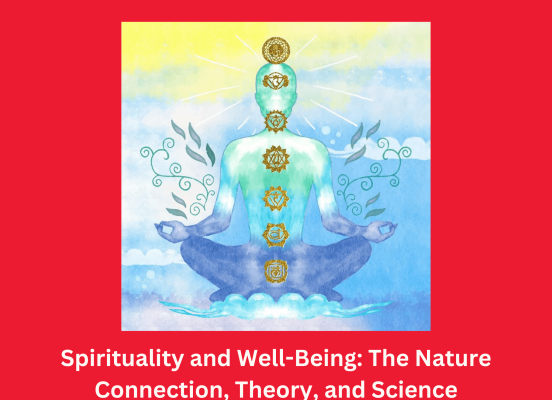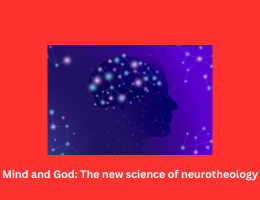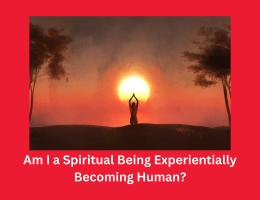
Spirituality and Well-Being: The Nature Connection, Theory, and Science
- By admin --
- Sunday, 07 Apr, 2024
1. Introduction
It need each theoretical knowledge and well conducted empirical studies to realize the relationships between spirituality and mental health. It is likewise vital to explore clean ground even as looking at these connections. In mild of these goals, the primary piece that follows is theoretical in character and goes back to the rules of a eudaimonic properly-being model that I proposed many years ago (Ryff 1989) and that has won traction (Ryff 2014, 2018a). Over 1200 publications had been produced, and the measures had been translated into 40 languages. Considering the breadth of this studies, it's miles helpful to invite if the some distance-off formulations that the incorporated model of well-being become produced from contained religious principles. Which of those earlier philosophies highlighted spirituality as a method of elucidating the fundamental concepts of perfect human functioning? This investigation sheds mild on a enormous theoretical query: namely, how distinct and similar thoughts approximately spirituality and mental fitness are. A predominant query is whether spirituality is better understood as an element of what makes nicely-being or as a distinct field that can have an impact on some factors of nicely-being, such main a useful life and going through stages of personal improvement. Expanding upon these theoretical troubles, the second element turns to an evaluation of empirical studies which have linked spirituality and faith to a whole lot of results, along with well-being. My contribution here is to provide a short overview of a huge range of empirical findings from a large national longitudinal studies that I even have performed for the beyond two decades, referred to as MIDUS (Midlife within the U.S.). More than 24,000 humans have contributed to the medical productiveness of the look at using the wealthy, interdisciplinary information from MIDUS, fitness practices, strain exposures, and psychological well-being (eudaimonic and hedonic). It also consists of thorough measurements of health, together with biomarkers.
2. Philosophical Questions: Are Spirituality and Well-Being Different or Related Fields?
Seemingly essential to each enterprise to awaken spirituality is the term soul. In fact, spirituality is often described in phrases of the soul instead of the material and bodily elements of being human, and the soul itself is often seemed because the non secular component of being human. The name of my essay, "Well-Being with Soul: Science in Pursuit of Human Potential" (Ryff 2018a), got me thinking about what the phrase "soul" way. First and important, I desired to focus on Aristotle's declare that the ultimate human desirable became "hobby of the soul in accord with virtue" in the Nichomachian Ethics (Aristotle 1925, 349 B.C.). The middle essence of eudaimonia, as described by way of Aristotle, is encapsulated on this sentence. It is described because the system of realizing one's true and high-quality nature. So, the primary intention in existence is to recognize and live in concord with one's daimon, a kind of spirit that is bestowed upon everybody at delivery. As a end result, eudaimonia represents the Greek imperatives of being what you're and striving for perfection in one's own ability (recognise yourself) (see Ryff and Singer 2008). Crucially, there has been no point out of religious experience or communication with the divine in this definition of eudaimonia. Instead, the primary focus became on doing morally. Many definitions from the fields of clinical, developmental, existential, and humanistic psychology have been developed all through centuries in an attempt to make clear the critical additives of healthful human functioning (Ryff 1982, 1985). These were used to create an included properly-being paradigm (Ryff 1989). Here, I wanted to see what these viewpoints had to say approximately spirituality or faith, if some thing. Maslow's (1955, 1968) idea of self-actualization stemmed from the variations between wishes which can be pushed by means of development and people that are pushed via deficiencies. He held that before one may want to advance to self-actualization, in which the self could be expanded and more desirable, the lower-stage wishes (including physiological need for survival and safety/safety from damage) had to be met.
3. A Review of Scientific Developments from MIDUS
Regarding Religion, Spirituality, Well-Being, and Health Religion and fitness were the situation of a good deal preceding research (e.G., Idler 2014; Koenig et al. 2012; Li et al. 2016). It is pertinent to inquire, given this extensive vicinity, "why concentrate on outcomes from a single observe?" There are motives to focus on the nationwide longitudinal studies Midlife in the U.S. (MIDUS). First, consistent with Ryff and Krueger (2018), a number one aim of MIDUS is to investigate human fitness and nicely-being as an included biopsychosocial system. In other phrases, working throughout disciplinary barriers is the important thing dedication. This implies that MIDUS has first-rate intensity in its checks of psychological and social variables, fitness behaviors, existence stresses, and fitness, similarly to which include thorough measures of religion and spirituality relevant to this Special Issue. Comprising an extensive form of biomarkers. The longitudinal design, huge countrywide samples, and those dimension capabilities provide exceptional possibility to refine the understanding of the relationships between spirituality and religion and fitness and well-being. Before we get into the effects, it's vital to remember that the majority of MIDUS participants become aware of as spiritual. In 2002, at some stage in the second one wave of the center sample, maximum members spoke back "very" (30%) or "relatively" (46%). In a similar vein, maximum respondents indicated that spirituality became very critical in their lives (forty nine%) or simplest slightly so (34%). In order to recruit a brand new countrywide sample of people within the equal age variety (25 to seventy four) as the baseline pattern that turned into first recruited in 1995, the same questions were posed in 2012 for the Refresher sample. The full-size majority of Refresher attendees likewise recognized as religious human beings and valued spirituality. However, fewer than a 3rd (30%) of the members in each companies said that they frequently attended religious or religious ceremonies. Thus, whilst there has been no tremendous correlation found between spirituality and religious activity, maximum MIDUS individuals who are consultant of the American public at large perceived themselves as non secular.
4. Nature's Abundant Potential to Foster Spirituality and Well-Being
This section addresses 3 subjects: (1) the technological know-how that is presently investigating how nature promotes human flourishing; (2) ideas from the humanities and humanities (poetry, literature, tune, artwork, history, philosophy) that highlight nature as a chief supply of concept in life; and (three) the non secular significance of the natural global, drawing on thoughts from indigenous peoples' worldviews and Jungian writings approximately the soul and the sacred.





